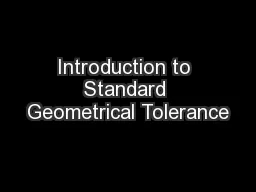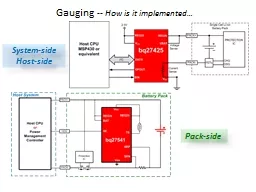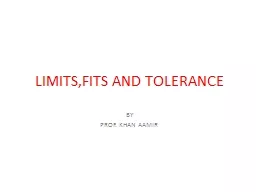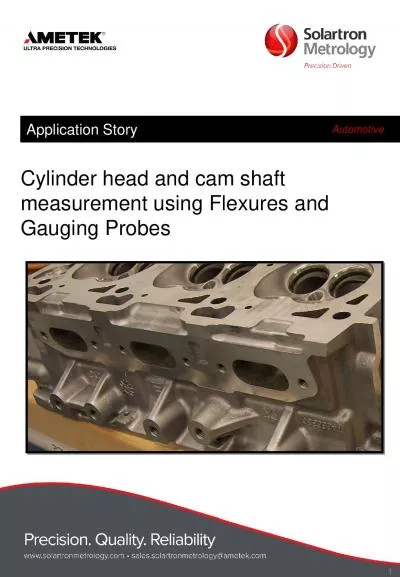PPT-UNIT II SYSTEM OF LIMITS, FITS, TOLERANCES AND GAUGING
Author : morgan | Published Date : 2023-10-30
TOLERANCES Tolerance is the total amount that a specific dimension is permitted to vary in positive or negative side It is the difference between the maximum and
Presentation Embed Code
Download Presentation
Download Presentation The PPT/PDF document "UNIT II SYSTEM OF LIMITS, FITS, TOLERANC..." is the property of its rightful owner. Permission is granted to download and print the materials on this website for personal, non-commercial use only, and to display it on your personal computer provided you do not modify the materials and that you retain all copyright notices contained in the materials. By downloading content from our website, you accept the terms of this agreement.
UNIT II SYSTEM OF LIMITS, FITS, TOLERANCES AND GAUGING: Transcript
Download Rules Of Document
"UNIT II SYSTEM OF LIMITS, FITS, TOLERANCES AND GAUGING"The content belongs to its owner. You may download and print it for personal use, without modification, and keep all copyright notices. By downloading, you agree to these terms.
Related Documents














